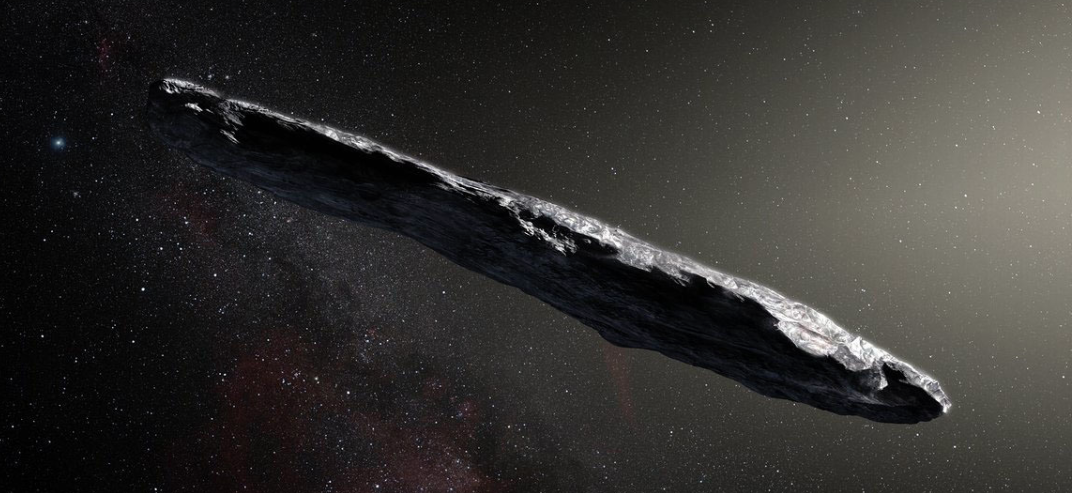

Do you remember ‘Oumuamua? The rod-shaped interstellar rock that, for some reason, some Harvard University scientists said might actually be a spacecraft built by intelligent extraterrestrials—even though pretty much every other scientist disagreed?
Well, in case the message was still unclear to you: It. Is. Not. Aliens, according to the conclusions of a new review study published in Nature Astronomy. And given everything else about ‘Oumuamua that we’ve learned in the past year-and-a-half since its discovery, that’s a very safe bet to get behind.
“In every way we look at this object, it looks like a planetesimal—a building block of a planet,” says Michele Bannister, a planetary astronomer from Queen’s University Belfast and the lead author of the new paper. “And we know planetary systems are going to make trillions upon trillions of these things, so it makes sense the one we finally see arrive from another star happens to be like what we’ve seen in our solar system, but just a little different.”
Perhaps Bannister is being overly cautious in describing ‘Oumuamua’s most puzzling traits. The “minor planet” is 800 meters long and 80 meters wide, and looks like a long cigar—highly unusual for objects of this size. As it left the solar system, scientists noticed it was actually accelerating, raising huge questions about what could possibly be propelling it forward through space. It was for this reason Avi Loeb at Harvard suggested ‘Oumuamua was an artificial spacecraft wrapped up in solar sail material, which was accelerating by design.
Bannister already rebutted this notion to PopSci last November, suggesting outgassing (an expulsion of gaseous material induced by the heat of the sun) was an entirely plausible explanation for the acceleration. In the new paper, she and her coauthors emphasize that while we still haven’t detected outgassing activity of the sort seen on comets, our datasets are not all that comprehensive given how rushed our observations of the rock were. The natural explanations are far from eliminated, and there’s no reason we need to cross the rubicon into “aliens did it.”
“There’s been enough time for as many of the observations made as possible to be published and analyzed, along with more in-depth analyses of the data,” she says. “We wanted to have a review where we could just settle everything out.”
The new paper involves a group of 14 scientists, all with different areas of expertise stretching between planetary science, planetary formation, the structure and movement of objects through interstellar space, and much more. It considers several different phenomena that might have forced ‘Oumuamua into a visit through our neighborhood, including a scenario where a gas giant ejected it from another star system.
The paper also argues that the unusual shape is perhaps not as unusual as we might think. ‘Oumuamua is the size of a skyscraper, but this is still small compared to most objects we can study intently. If we’d been able to get a more detailed look at this giant space cigar, we very well could have found a simple explanation for its shape.
Review studies don’t typically inject a whole lot of new science into a particular topic, and this latest paper isn’t an exception. But there is a bit of new analysis, particularly around which observation techniques worked well for studying ‘Oumuamua and which did not, informing scientists how to improve our observation of future interstellar objects. ‘Oumuamua is strange so far, but it might not be all that strange once we detect and study other visitors to the solar system. Besides giving us a better sense of how planetesimals form in other regions of space, these observations might also help us finally understand exactly how much stuff we’re surrounded by.
That might be sooner than we think. The Large Synoptic Survey Telescope (LSST), which will see first light from Northern Chile in 2020, will be able to essentially watch the movement of objects as they occur in the night sky. “We’re expecting we’ll be able to use it discover on the order of one new ‘Oumuamua per year,” says Bannister. “That will really help us get a better picture of this population.”
